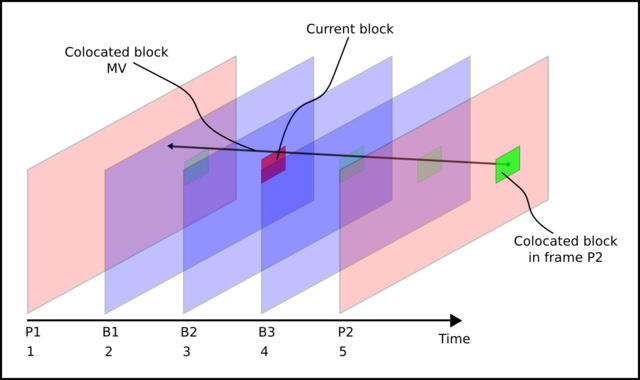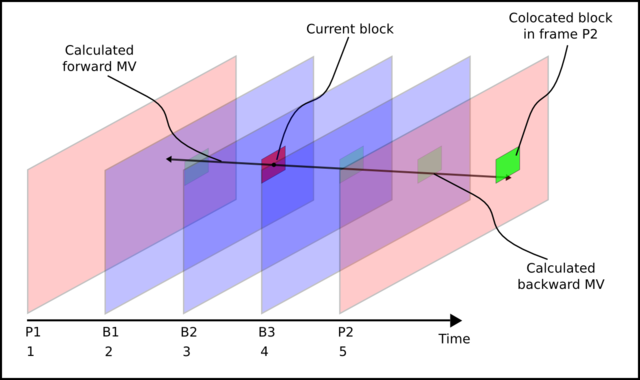Motion Prediction
Motion prediction is an important area within the majority of modern video codecs describing methods of obtaining motion vectors with which one can predict pixel values from sets of reference pixels, usually in other frames.
Prediction Methods
- Intra
- Forward
- Backward
- Interpolation (forward and backward)
- Weighted (similar to interpolation, except the weight of the reference pixels being mixed depends on their distance from the current frame)
- Direct
- ...
Direct Prediction
Direct prediction offers methods for calculating motion vectors for already coded vectors to reduce the bit cost of coding B-frames and take advantage of motion coherences in different domains. There are two methods of direct prediction - spatial and temporal.
The spatial mode calculates motion vectors from the vectors (left, top left, top? if available?) of neighbouring blocks. Depending on the prediction method used in said neighbouring blocks, the resultant B-frame prediction mode can be one of forward, backward or interpolation.
Temporal direct prediction necessarily uses the interpolation mode. The temporal mode considers the forward motion vector of the colocated block in the first list 1 reference frame. If there are no reference B-frames or B-frame reordering, the first list 1 reference frame is usually the next P-frame.
Note: As poc(L1) > poc(cur), the signs of the components of MV_L1 are swapped.
Where MV_L1 colocated is the motion vector of the colocated block in the first L1 reference frame and poc(*) gives the position of frame * in the sequence of frames (c.f. picture order count §8.2.1 of the H.264 spec).
Consider the following setup where we have a sequence of frames PbbbP with no reference B-frames / frame reordering:
To visualise the process, the end points of the forward motion vector remain in the same frames (starting at P2, ending at P1) but the vector is translated such that it appropriately intersects the current macroblock (in red) in the current frame (B1).
The translated vector is essentially 'split' setting the start point at the appropriate position of the current macroblock and pointing along the translated vector forward to P1 and backward to P2.



